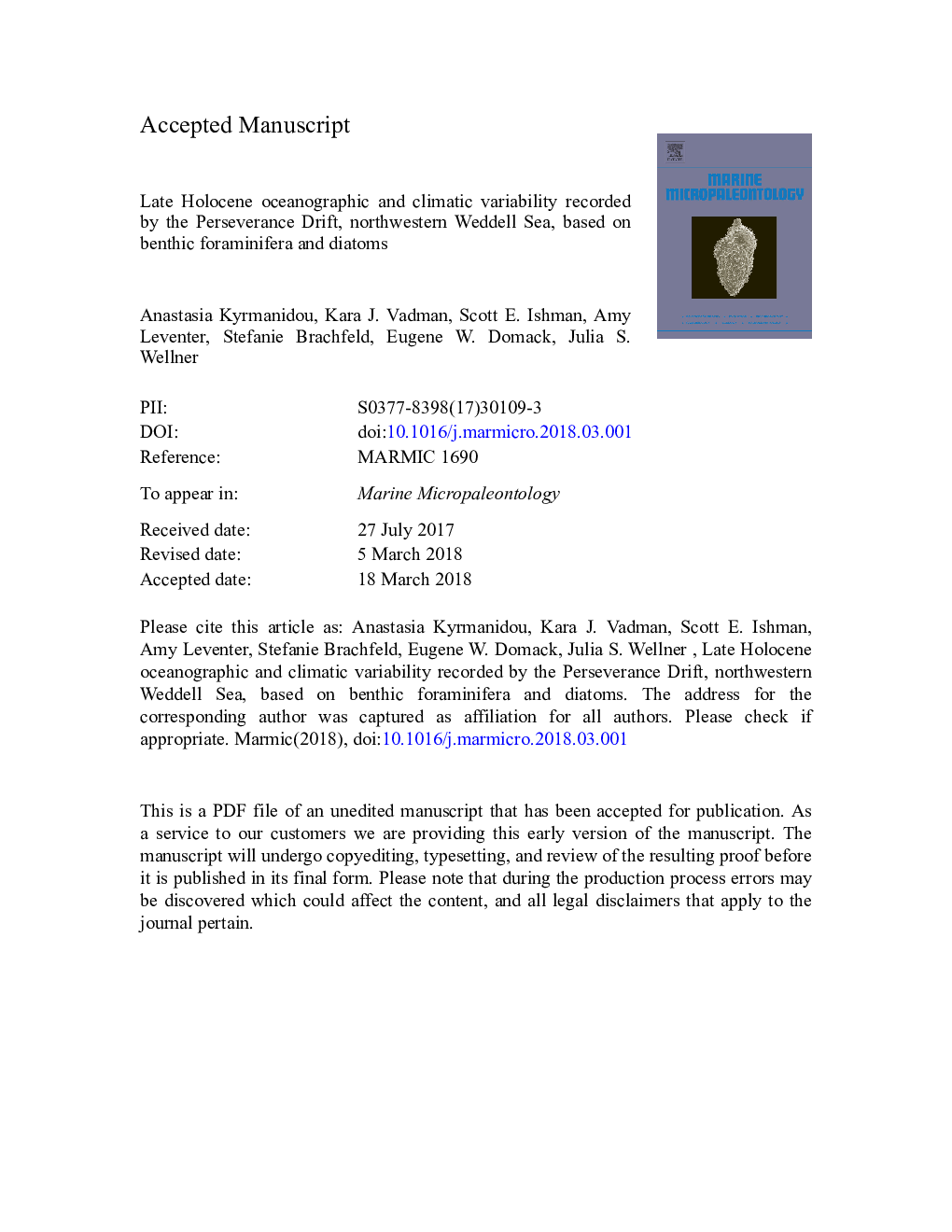| Article ID | Journal | Published Year | Pages | File Type |
|---|---|---|---|---|
| 8916493 | Marine Micropaleontology | 2018 | 31 Pages |
Abstract
The Perseverance Drift, located in the Joinville-D' Urville Trough, northwestern Weddell Sea, records changes in ocean and sea ice conditions throughout the middle to late Holocene, with a record extending back to ca. 3400â¯yr BP. The 2562-cm composite record collected from a water depth of 806â¯m, documents the uppermost section of the 90-m thick sediment drift. Spring-blooming diatoms (Chaetoceros subg. Hyalochaete) are abundant through the sedimentary record. The greater proportion of Chaetoceros vegetative valves compared to resting spores indicates that the marine environment is highly productive, and nutrients generally are not limiting. Epiphytic diatoms, dominated by Cocconeis spp., are observed throughout JKC36, suggesting transport of algal detritus from shallower regions to the benthos. Three foraminiferal assemblages (FAs): Miliammina spp., Globocassidulina spp., and Paratrochammina bartami/Paratrochammina lepida/Portatrochammina antarctica characterize the benthic foraminiferal fauna and reflect affinities with water masses circulating across the Perseverance Drift and tolerance to corrosive bottom waters. The interval 3400-1800â¯yr BP is marked by high abundances of Globocassidulina spp., indicating incursions of Weddell Sea Transitional Water over the drift site. This interval implies a period of “freshening” of the water column, coinciding with an open-marine or seasonally open-marine environment during the middle-to-late Holocene Climatic Optimum. The interval 1800â¯yr BP to the present displays characteristics of slightly colder conditions, as indicated by the absence of the calcareous Globocassidulina spp. FA, and the pronounced presence of agglutinated P. bartami/P. lepida/P. antarctica FA, along with other agglutinated species that are indicative of the presence of sea ice. Therefore, this interval is interpreted to represent the onset of Neoglaciation at the northeastern tip of the Antarctic Peninsula. The consistent presence of Miliammina spp. FA corroborates that the sedimentary record represents a productive, open-marine setting with seasonally variable sea ice extent. The Drift is a unique geologic archive that provides an excellent target for future coring based on the preservation of abundant carbonate material for radiocarbon dating and the potential to develop a multi-proxy data set that could offer a robust understanding of the Holocene depositional and paleoclimatic conditions of the northwestern Weddell Sea.
Related Topics
Physical Sciences and Engineering
Earth and Planetary Sciences
Palaeontology
Authors
Anastasia Kyrmanidou, Kara J. Vadman, Scott E. Ishman, Amy Leventer, Stefanie Brachfeld, Eugene W. Domack, Julia S. Wellner,
